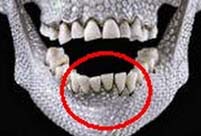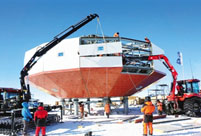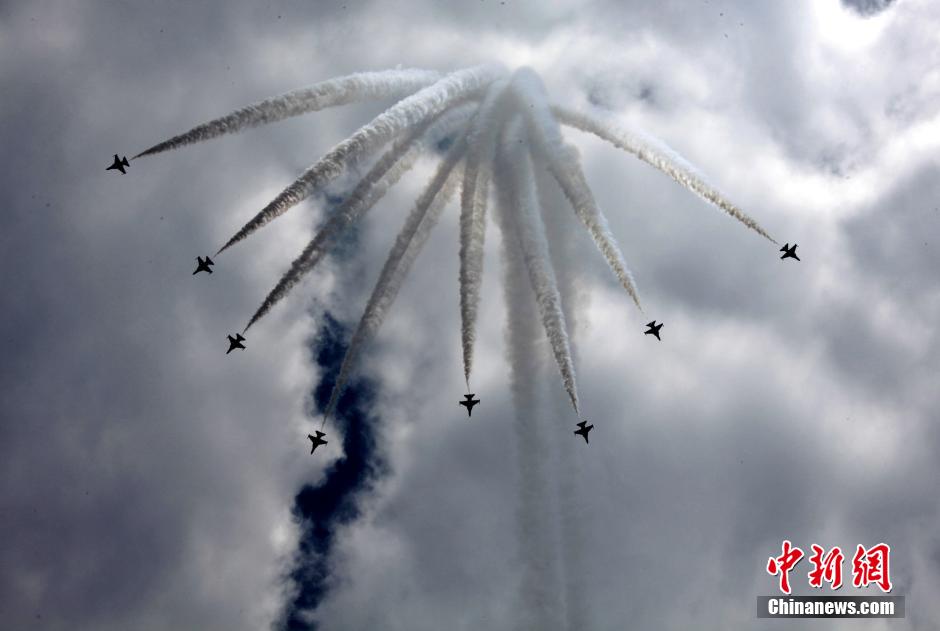 Amazing cliff diving in cold winter
Amazing cliff diving in cold winter
 Enjoy Sochi 2014 in slow motion
Enjoy Sochi 2014 in slow motion
 University student sentenced to death for poisoning roommate
University student sentenced to death for poisoning roommate
 Chinese lunar New Year celebrated in San Francisco
Chinese lunar New Year celebrated in San Francisco
 Taiwan Lantern Festival 2014
Taiwan Lantern Festival 2014
 Haiyang Yangge: make up
Haiyang Yangge: make up
 China's top 10 richest cities
China's top 10 richest cities
 President Xi visits garrison troops in Inner Mongolia
President Xi visits garrison troops in Inner Mongolia
 Turnip sculptures amaze tourists in Qingdao
Turnip sculptures amaze tourists in QingdaoJOHANNESBURG, Feb. 19 -- The illegal mining drama continues unfolding on Wednesday as up to 100 illegal gold miners trapped underground have been warned they must evacuate disused shafts and tunnels east of Johannesburg, which the owners plan to seal on March 3.
The warnings came after Feb. 16 reports that the lives of more than 200 miners were in danger as large rocks blocked the entrance to the disused shaft they were using in Benoni, some 30 kilometers east of Johannesburg.
Rescue officials from the local Ekurhuleni Emergency Services (EMS) said it was unclear whether the rocks had fallen there or had been placed by a rival group of illegal miners.
EMS media liaison officer Rogers Mamaila said two illegal miners were dead following a rock fall at a separate shaft at Kleinfontein, about five kilometers north of the Benoni site. One body was recovered on Feb. 18 while the second, almost a kilometer underground, may not be retrieved as the task is too dangerous.
Mamaila said the South African government's Department of Mineral Resources (DMR) had sent an inspector, who declared the tunnels too unsafe for anyone to fetch the body.
"As is the case with the other (Benoni) incident, these miners will be timeously warned of the closure of the opening made here before it is sealed," Mamaila said.
There has been no official confirmation that the number of endangered illegal miners in the area was in fact 200. Nor was there any official tally of the number who emerged in a panic and fled the Kleinfontein site when the dead bodies were found. On Feb. 17, warning signs in four different languages had been lowered into the Benoni shaft, telling the occupants the exit would be sealed. By Feb. 18, while 26 of the men had surfaced and been arrested, an unknown number refused to come up, saying they did not want to be detained.
Mamaila said the men who surfaced at Benoni, all foreign nationals, had been arrested.
South Africa's disused shafts are a draw card for gold diggers from neighboring Mozambique, Lesotho and Zimbabwe.
"From the simple preliminary tests we have carried out, on blood pressure, pulse and so on, they are in good physical condition," Mamaila said.
He said it appeared the men had acclimatized to the underground conditions, which he described as dangerous.
The official added that there were only five miners left in the Benoni shaft where the others had surfaced but he had no idea of many more might be living and working in the vast underground tunnel system in the area.
The South African Chamber of Mines estimates that illegal mining costs South Africa 5.6-billion rand (516 million U.S. dollars) in lost revenue every year.
Illegal mining has been rife in South Africa for the past few decades as mines fell into disuse.
South Africa was the world's foremost gold producer for more than a century before being overtaken by China in 2007.
In that long period, scores of mines, big and small, have been opened and closed in several parts of the country.
In addition, changes of ownership, which have sped up since the country held its first democratic elections in 1994, have left a confusing picture about who is responsible for looking after shafts that are no longer in use.
While South Africa's Department of Mineral Resources has a policy that shafts no longer in use should be sealed for safety reasons, this is not always easily enforced. Nor is it easy, because of the terrain, for authorities to police every old mining site to ensure shafts remain sealed.
A contributor is unemployment, which consistently hovers around 25 percent, according to Statistics South Africa. When those who have given up looking for work are included, the figure has ranged between 34 percent and 40 percent over the last decade.
In this climate, old mines which are no longer commercially viable to large-scale formal operators still contain enough deposits to attract illegal miners.
An unnamed illegal miner told South Africa's eNews Channel Africa television channel on Feb. 18, "If we manage to work a day and night, we get 400 rand (36.8 U.S. dollars) a day."
This is roughly the same as the pre-tax wages of South African platinum mine workers who are on a prolonged strike for higher pay.
Another illegal miner, who refused to be named, told journalists at the Benoni site, "We make about 330 rand (30 dollars) per gram of gold. We sell to men who have access to the gold market, who then turn a bigger profit." As is customary among the poor in South Africa, he is the sole breadwinner in an extended family, supporting an unemployed wife, two children, his two siblings and his parents.
Although gold is the most common target for illegal miners, other resources such as platinum, diamonds and semiprecious stones, particularly wesselite, are also sought after.
Illegal mining has been uncovered in South Africa's Free State and Mpumalanga provinces as well as the economic heartland of Gauteng, especially the mineral-rich belt east and west of Johannesburg.
In the most infamous case to date, 91 illegal miners perished after a fire broke out underground in a disused section of Harmony Gold Mining's Eland shaft in South Africa's Free State goldfields in June 2009. The case attracted international attention and led to crackdown attempts by the South African government.
Instead of seeking prosecutions for lesser offences such as trespassing and theft, the South African state began to treat illegal mining as organized crime.
The country's Directorate for Priority Crime Investigations, commonly known as the Hawks, received instructions to probe illegal mining. In addition, South Africa's Minister of Mineral Resources Susan Shabangu set up Illegal Mining Stakeholder Forums, where those with vested interests could seek solutions with the help of her Department of Mineral Resources.
By November 2013, Shabangu said, illegal mining had been drastically reduced because of these measures. As evidence she cited the arrests of 15 illegal miners at Matholesville, west of Johannesburg. Yet the problem persists.
On Feb. 18, the Hawks warned that they would intensify their crackdown on illegal mining.
Ironically, given the prevalence of illegal operators, formal mining in South Africa is highly regulated.
In addition to acquiring rights from the country's Department of Mineral Resources, mining companies must also secure a water license, plus environmental clearances at local, provincial and national government level. They must also ensure land is zoned for mining purposes. In some cases they must satisfy other legislation or by-laws as required.
South Africa's formal mining sector has been beset by a series of strikes, especially in the platinum and gold sectors, since 34 miners were shot dead by police at Marikana in the North West Province last year, making international headlines.
With profitability under threat, lay-offs are on the cards, with the world biggest platinum producer Anglo American Platinum (Amplats) getting rid of 5,000 jobs, after initially planning to shed 14,000.
 Most gorgeous female celebs in Chi-pao
Most gorgeous female celebs in Chi-pao Second round of test kicks off at Beijing Film Academy
Second round of test kicks off at Beijing Film Academy Ancient Qiang people had vertically grown teeth
Ancient Qiang people had vertically grown teeth Top 10 Chinese youth’s favorite seaside destinations
Top 10 Chinese youth’s favorite seaside destinations Traditional Tibetan clothing tailors
Traditional Tibetan clothing tailors In photos: Unveiling Taishan station
In photos: Unveiling Taishan station Beautiful moments of family reunion
Beautiful moments of family reunion 10 Valentine's Day ideas for couples
10 Valentine's Day ideas for couples Let's get married today!
Let's get married today! Chinese warplanes C919 to appear at Singapore Airshow 2014
Chinese warplanes C919 to appear at Singapore Airshow 2014 Ruins of Shang Dynasty's structure unearthed in Shaanxi
Ruins of Shang Dynasty's structure unearthed in Shaanxi  Intercity high speed train in operation
Intercity high speed train in operation Severe coldness freezes large parts of China
Severe coldness freezes large parts of China  Beautiful moments of Sochi
Beautiful moments of Sochi  It's not just performing this year
It's not just performing this yearDay|Week|Month